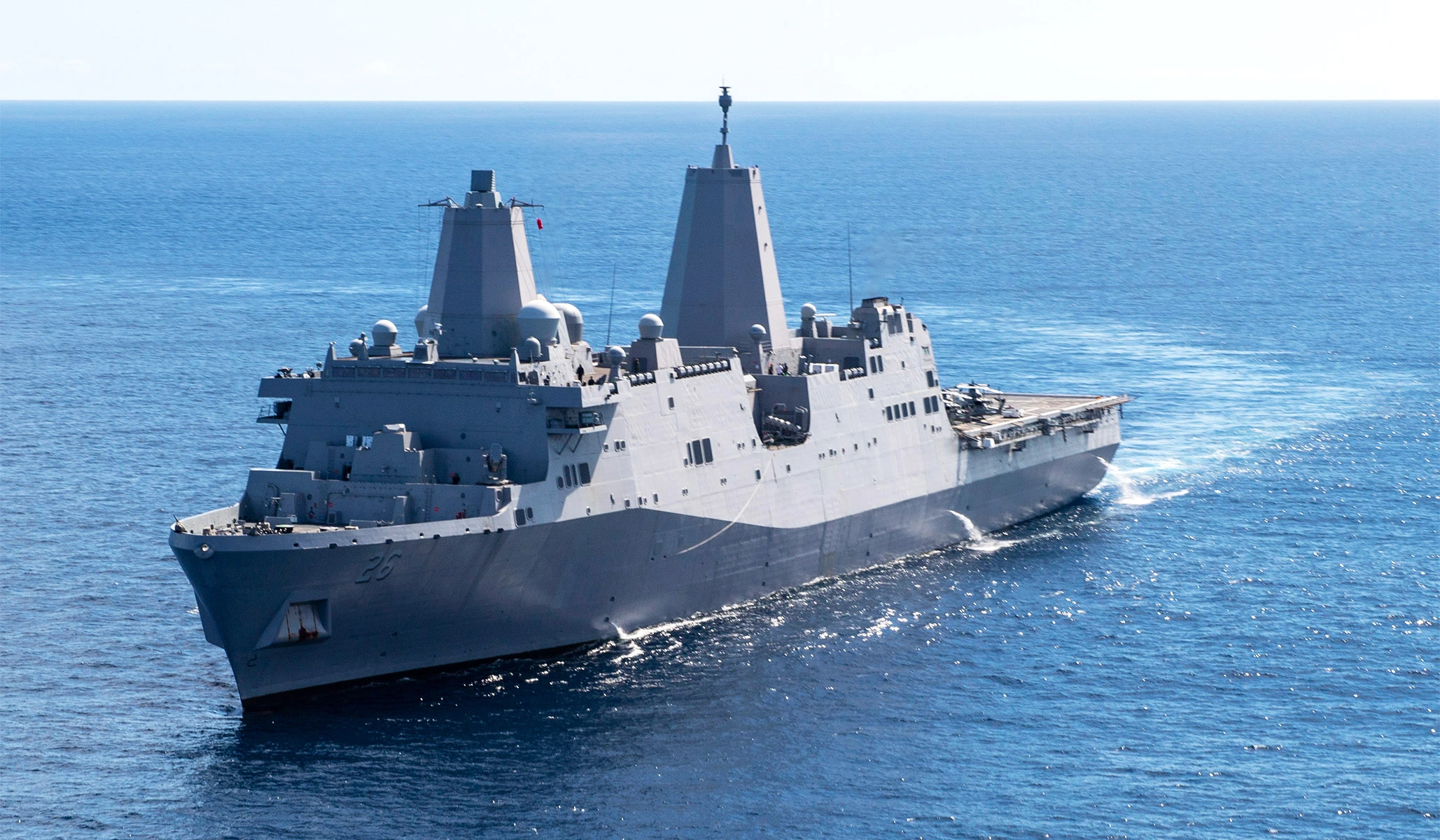As Congress considers the FY2024 National Defense Authorization Act (NDAA), the future of the Navy’s amphibious force and the San Antonio-class Landing Platform Dock (LPD) ships is a topic of intense debate. Some argue that the LPDs should be scaled back or stretched out in construction to reduce costs, but we believe that LPD construction should cease entirely for several reasons.
Firstly, the United States Marine Corps has been focused on an amphibious-assault strategy for too long and needs to evolve to remain relevant. It has been 73 years since the Marine Corps conducted an amphibious assault against an opposed beach, and advancements in technology make it unlikely that they will do so again. Potential adversaries have invested heavily in anti-access/area denial weapons, making it challenging for our forces to reach their shores. The beaches suitable for amphibious assaults are known to both us and our adversaries, and modern sensors and long-range missiles would subject our ships and vehicles to continuous attacks before reaching the beach.
The war in Ukraine has demonstrated that nations with missiles will use them, and future opposed amphibious assaults would likely end in disaster due to advanced anti-access sensors and weapons. The idea that large amphibious ships like LPDs can perform their intended missions in a high-end conflict is unrealistic. U.S. Navy aircraft carriers, equipped with self-defense systems and capable escorts, are already planning to operate outside the first island chain under combat conditions. In conflicts with China and Russia, the Marine Corps remains critical, but large-deck amphibs like LPDs would require multiple expensive escorts and play marginal roles once hostilities begin. Instead, Marine Corps units equipped with anti-ship and land-attack missiles would be game-changing assets if delivered ahead of combat operations.
Proponents of LPDs argue that they are needed for other missions such as humanitarian assistance and troop movements in lower-intensity conflicts. However, the high cost of LPDs ($2 billion per ship) makes them unsuitable for these scenarios. Other platforms designed to commercial standards can fulfill these missions at a lower cost. By reallocating half of the funds allocated for LPDs to alternative designs better suited for likely Marine Corps missions, the other half could support Navy shipbuilding programs like submarines, destroyers, and unmanned vessels that address proven requirements in high-end conflicts.
There have been attempts at reforming the Marine Corps’ force structure, such as General David Berger’s proposals, which faced significant criticism from retired Marine generals and government officials. This resistance is not new, as the Marine Corps has historically been resistant to change. However, Berger’s vision aligns with war-gaming scenarios and the need to counter China’s anti-access/area denial weapons. These reforms would create a lighter, more agile Marine Corps distributed throughout the Pacific, supported by light amphibious warships. However, the pushback from influential retired generals has had an impact, leading Berger to reverse course and support an “all of the above” approach to Navy shipbuilding.
Shifting shipbuilding priorities is necessary to prepare the Navy for combat in the Western Pacific, but care must be taken to preserve the industrial base in Mississippi and Alabama currently involved in LPD construction. New programs like Navy Medium Landing Ships (LSMs) for the Marine Corps and destroyers for the Navy can be assigned to these shipyards, ensuring a smooth transition without laying off skilled workers. However, the argument that specific ships must be built to retain workers should not outweigh the need for the right ships for the fight.
General Berger’s vision for the Marine Corps should be supported, leaving outdated designs like LPDs in the past. The Navy should prioritize the construction of numerous new LAW/LSM platforms while ending the construction of older designs to allocate funds for submarines and frigates. It is crucial that Congress and the Navy provide an honest and transparent account of how taxpayer dollars are used.
General Berger’s initiatives should be carried forward, and his successor, General Eric Smith, should continue to support his bold vision. The voices of the past who resist change should be disregarded.

